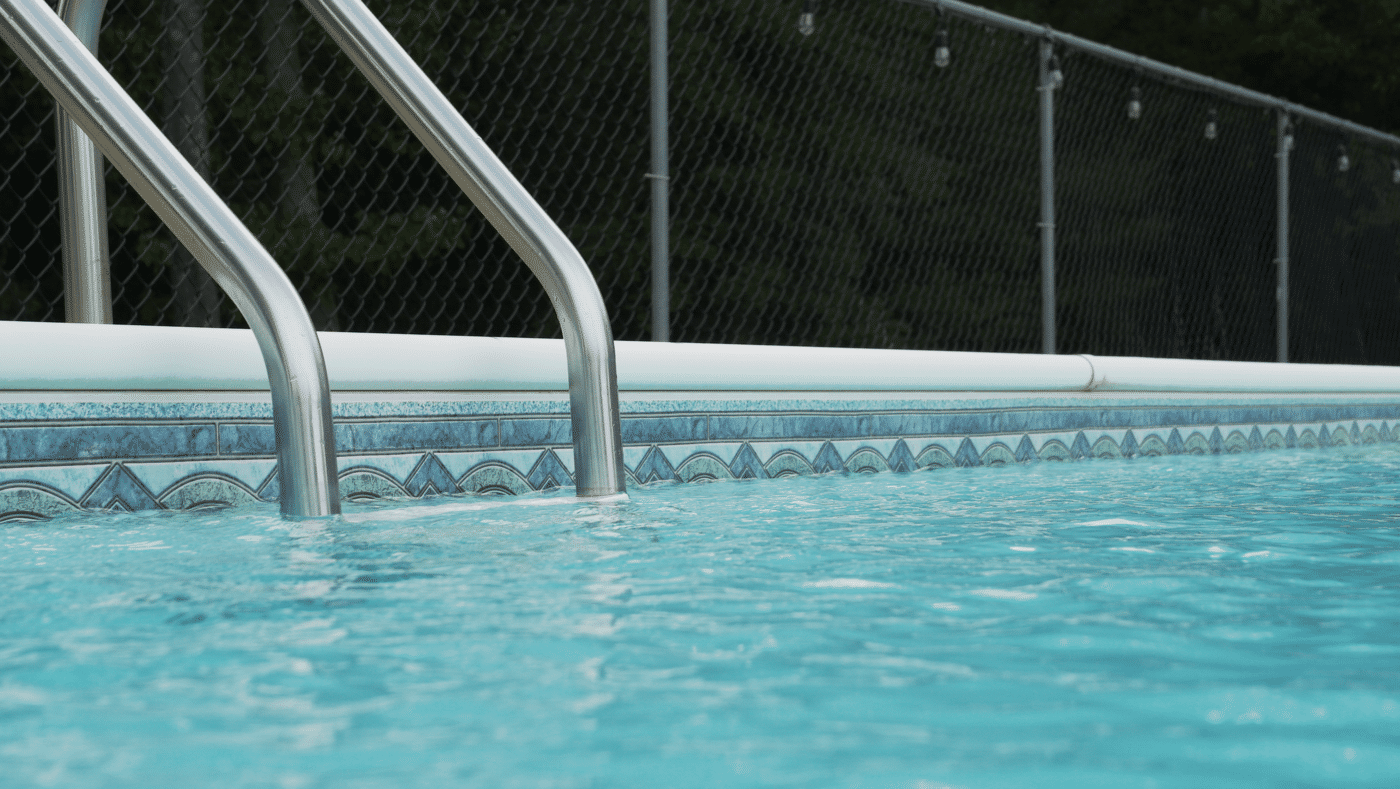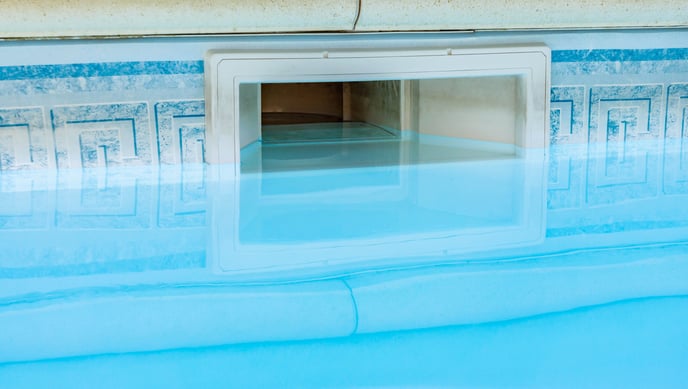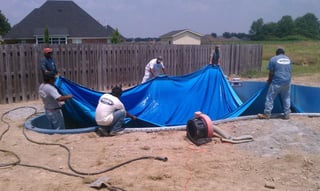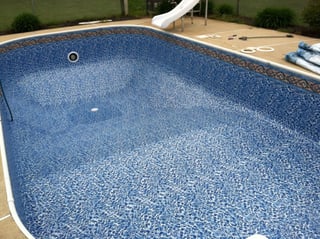
Inground Vinyl Pool Liner Thickness: Basics, Costs, and Options
Installation & Construction | Pool Manufacturing Process | Swimming Pool FAQs | Swimming Pool Design | Vinyl Liner Pool Information
Are you shopping for vinyl pool liners for your swimming pool and uncertain what thickness is best? Want to verify in layman’s terms what your pool builder has offered? Unsure what a “mil” measurement even means?
At River Pools, we specialize in fiberglass pools, and we also know a lot about other inground pool types. If you're interested in a vinyl liner swimming pool for your home, we want to share some key information on the thickness of the liner to help you make the best choices while buying your pool.
To start, vinyl pool liners are usually 20, 27, 28, or 30 mils thick. The decision on whether or not to upgrade the thickness is yours—but keep in mind that this detail that will be with you for 5-9 years.
What you’ll want to know:
- The basics (measurements and shape options)
- If thicker liners last longer
- How much more they cost
- If they’re worth it
- How to make sure your liner lasts as long as possible

Vinyl liner thickness basics
Vinyl liner thickness is measured in mils. Note: a mil is not a millimeter. A mil is 1/1000 of an inch, also called a “thou” (as in a thousandth). About 39 mils equals 1 mm.
Another unit of measurement is the gauge, which actually varies in size from dealer to dealer. If you’re shopping for a vinyl liner and it’s measured in gauges, ask for the measurement in mils to be sure you get what you need.
The vinyl liner will either be embossed or non-embossed (standard).
Embossed liners vary in thickness, with peaks and valleys. It feels softer or thicker to the touch due to this false thickness. They’re measured by the highest peaks of the liner, not by the lower solid part, so it’s not really as thick as it measures; there are blank spaces.
Non-embossed liners are flat across the top. This option doesn’t feel as squishy, but it is equally thick all the way through.
The economic option for a vinyl pool liner is 20 mil embossed.

The thicker vinyl is more resistant to punctures from dog claws, tree branches, glass, toenails, etc.
Yes, toenails. Pro tip: you should keep your nails short enough not to puncture your swimming pool liner.
These types of punctures are a nuisance but not necessarily destructive. Failure generally occurs in the corners of a pool as ill-fitted corners often have air space behind them, leading to dry-rotting.
The downside is that thicker vinyl is heavier and harder for an installer to work with, as well as more expensive. It doesn’t lay down as well and is harder to get wrinkles out of.
Conversely, thinner vinyl will be less expensive. It’s more elastic and fits in corners better.

Do thicker vinyl liners last longer?
The standard lifespan for a vinyl liner is 5–9 years regardless of thickness. But does this upgrade make it last longer? The answer is… probably.
There’s a caveat: a correctly installed 20-mil liner will last longer than a poorly installed 27-mil liner. When a liner is installed incorrectly, it can be too stretched or have air gaps in the corners, which can lead to dry rotting and cause premature failure.
If both liners are properly installed, the thicker liner should last longer, although there are so many variables involved that it’s hard to say.
The thicker vinyl is like a good insurance policy: problems will likely come up either way, but a thicker vinyl is additional protection from the worst damage.
How much does thicker vinyl cost?
It can cost several hundred dollars to upgrade to a thicker vinyl pool liner. Each time a vinyl liner increases total thickness or increases from embossed to non-embossed, the cost rises due to the increase in required material.
For example, a non-embossed 20-mil liner is 20 mils across the whole top (indicated as 20/20). This liner will cost less than an embossed liner that measures 28 mils at its high point and 20 mils at its low point (called 28/20) because the embossed liner has more material. By the same principle, that same 28/20 embossed liner will cost less than a non-embossed 28-mil liner (28/28), which uses even more material. Each upgrade increases the cost by $200-$400.
Is the upgrade worth it?
In our opinion, yes, the upgrade is worth it because a thicker liner helps protect from punctures in the liner. It also provides insurance when the liner is punctured, so that in many cases it can be patched rather than needing to be completely replaced.
Story time!
Years ago, our co-owner Jason Hughes had a service call for a vinyl liner pool. The pool owner had let his German shepherd swim in the pool every day and was now trying to sell his house and avoid a liner replacement.
There were so many holes in the liner that the water had leaked down to below knee level and Jason could hear the water falling behind the liner in a cascade. After 4 hours and over 100 patches, he repaired the liner so that it wasn’t leaking anymore.
Now, this was a 27-mil liner, so it was pretty thick. The pool owner probably should have replaced the liner, but the point here is that he was able to patch the material without a full replacement, which would have cost over $4,000. He never could have done that with a 20-mil liner.
What can I do to make sure my liner lasts as long as possible?

Whether you decide to use thinner or thicker vinyl, you want the liner to stay in good condition. You’ll have the best luck if you keep up with the maintenance in these three areas.
First, maintain your water chemistry. Specifically, it’s important to keep chlorine and pH within the ideal range.
Second, ensure the liner is installed properly. If you’re not installing it yourself, ask the professional installer questions to be sure the company knows what they’re doing.
Third, try to keep dogs out of the pool as much as possible. If they do get in, keep them away from the liner. Basically, try to reduce the chance of puncture.
Alternatives to inground vinyl liner pools
Liner maintenance is a common issue for inground vinyl liner pools. For comparison, fiberglass pools are actually fine for dogs to play in. Their claws can’t puncture or tear the gel coat. Fiberglass pools also have no liner to replace, which reduces your lifetime cost of ownership—liner replacements cost more in the long run.
Concrete pools are durable as well and won’t be scratched or split by dog claws or sharp objects that fall in the pool. While they have a higher lifetime cost for maintenance, they look classic and don’t lose resale value due to future vinyl liner replacements.
For the best choice of pool for your family, we recommend you learn more about the differences between vinyl liner pools, concrete pools, and fiberglass pools before making your final decision. You can also download our free ebook which compares these three pool types in-depth by clicking the button below.

Take a look at our catalog of pool models today, and browse our gallery to see what we can do for your swimming pool project.
Want to know how much your fiberglass pool might cost? Contact us today to request pricing and discuss the details of your pool project, or try out our pool pricing calculator tool below for a fast estimate:

Want to see about how much that cost will be with all your favorite pool accessories?
Use our Design and Price Tool to walk through your options and approximate price!
As always, if you have questions or comments, please leave them below.
Up Next:
How Long Do Vinyl Liner Pools Last?
Inground Pool Shopping: Can You Buy a Pool Online?
DIY Inground Pools: Costs, Types, and Problems to Consider
Editors note: This article was updated on July 25, 2024




